nutrient poor soils
Showing 25–36 of 67 results
-
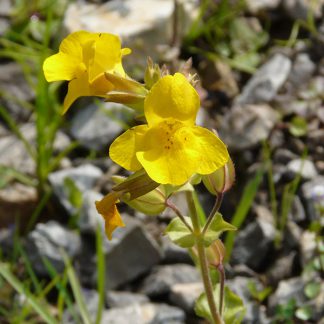
Erythranthe guttata / seep monkeyflower
- yellow flowers with red spots in clumps of 5 or more
- flowers large for the plant, but otherwise "normal" size
- two "lips" - lower lip larger than upper, each with 2 petals
- found in wetlands of all kinds
-

Festuca idahoensis / Idaho fescue
- a bunchgrass growing in very dense clumps
- over-winters green; an early green grass in spring
- green to blue-green to silvery green leaves
- individual flowers in clusters of hairy spikelets on branched panicles; very dark purple or green
- seeds have large spines (awns) at the tips
-
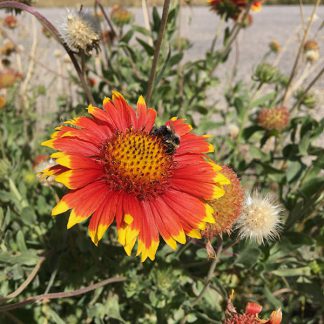
Gaillardia aristata / common blanketflower
- bright red petals with yellow tips, or yellow petals the whole way
- reddish brown central disk
- attractive yellow seed balls with tufts of red hair all over
- leathery, slightly hairy leaves
-
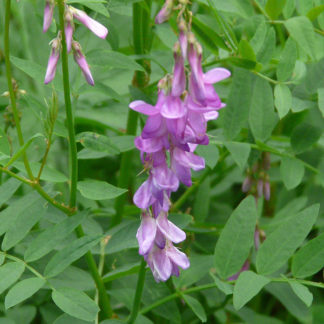
Hedysarum occidentale / western sweetvetch
- tall legume with hot pink flowers
- inflorescence several inches long; up to 80 flowers
- pinnately compound leaves with 9-21, inch-long leaflets
- higher elevations on drier, more rocky soils
-
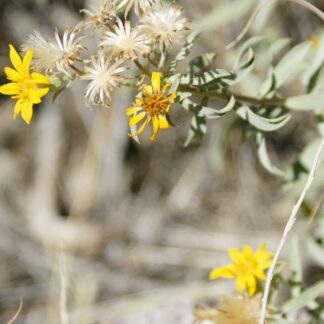
Heterotheca villosa / hairy goldenaster
- yellow composite with 10-20 ray florets, orange-brown disk
- hairy leaves and stems
- blooms throughout season, often densely
- disturbed and challenging habitats
-
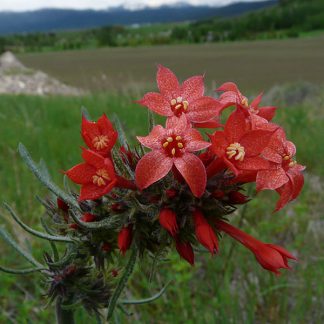
Ipomopsis aggregata / scarlet gilia
- bright red (usually), elongated, trumpet-like flowers; 5 petals
- late season (July, August) flowers may be white
- highly divided, comb-like leaves
- pollination by hummingbirds (red forms) and moths (white, late forms)
- smells bad but tastes good
-
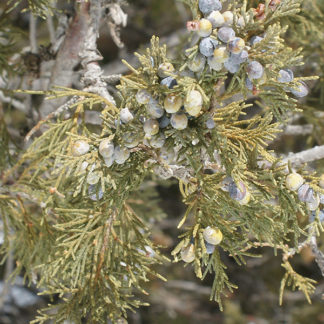
Juniperus scopulorum / Rocky Mountain juniper
- small, rounded evergreen tree (or shrub)
- fibrous, red to grey, shredded bark
- pollen and seed cones at branch tips on separate plants
- female cones blue berries with a waxy, whitish bloom
- leaves on mature plants scale-like
- leaves on young plants are prickly, needle-like
-

Koeleria macrantha / Prairie Junegrass
- short, tuft-forming bunchgrass
- leaves short and basal with raised veins
- grows in early spring; flowers in June/July
- spike-like cylindrical inflorescence, 2-5" long, tan or purple
- scattered distributions, esp. in rocky or sandy forests or plains
-
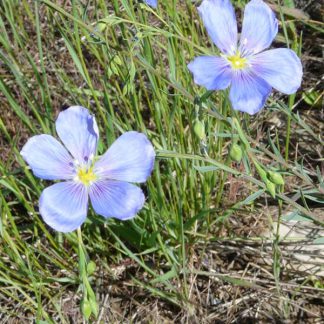
Linum lewisii / wild blue flax
- intense blue, 5-petaled flowers
- red-ish or darker blue veins in petals
- buds, flowers and developing fruit present at same time
- narrow, sessile, 1 inch (ish) leaves
- especially on roadsides and in meadows in the Valley
-

Lithospermum ruderale / Columbia puccoon
- small, pale yellow flowers in early spring
- flowers in dense clusters, nestled among the leaves
- 1–3 in. long, linear leaves, notably crowded on upper part of stems
- in dry areas, especially with sagebrush
-
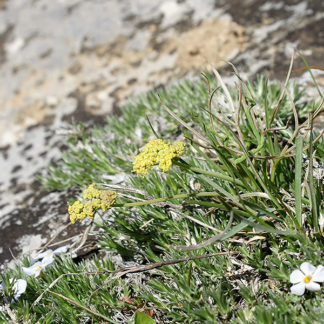
Lomatium triternatum / nineleaf biscuitroot
- flowers soon after snowmelt
- yellow compound umbel on leafless stem
- leaves are three-fold compound; leaflets grass-like
- may be tall with wide umbels on good soil
- may be very short with small umbels on rocky, sandy, low nutrient soil
-

Lotus corniculatus / birds-foot trefoil
- roadsides and other disturbed areas
- numerous bright yellow, pea-like flowers
- three, oval and pointed leaflets
- seed pods are arranged like toes on a bird's foot
Showing 25–36 of 67 results